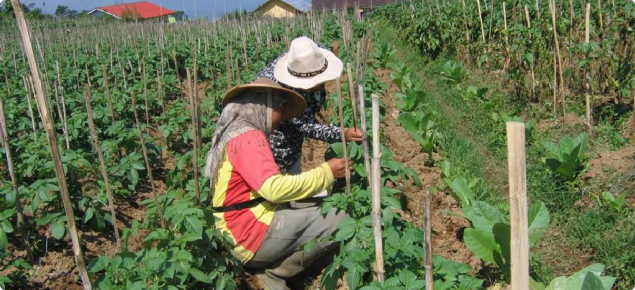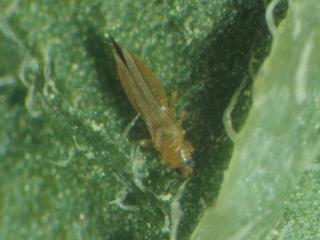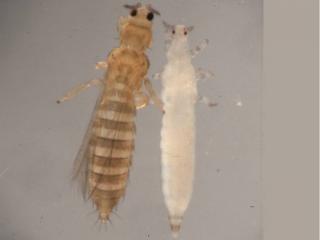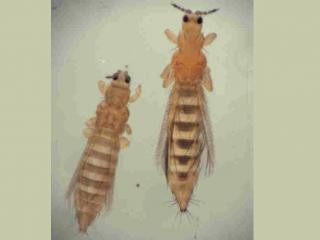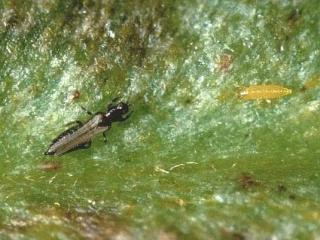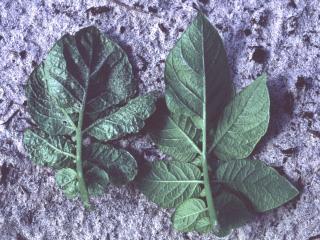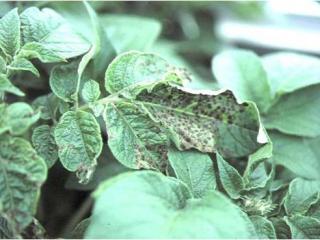Identification
The Indonesian name for thrips is "trips" and they are in the insect family Thripidae.
Thrips are small, cigar-shaped insects up to 2mm long that feed on potato leaves and flowers by sucking/scraping. Adult thrips vary from grey to yellow, brown to black. Adults have a pair of thin wings held over their backs. Nymphs are pale-white to yellow and do not have wings.
Thrips feed on both leaf surfaces, but are more common on the underside. They are so small they are usually found only after the effects of their feeding is noticed on leaves - distorted or silvery grey leaves (see photo below). A 10x magnifier is needed to see the insects clearly.
Although palm thrips (Thrips palmi) is a common insect in potato crops in Indonesia, and onion thrips (Thrips tabaci) is a common insect in Western Australian crops, they rarely cause damage.
Other thrips that occurs in potato crops are western flower thrips (Frankliniella occidentalis) and tomato thrips (Frankliniella schultzei). While western flower thrips is very similar to onion thrips (see photo), tomato thrips adults are black and their nymphs are yellow.
Feeding initially causes silvering of leaves, especially on the under surface. With continued feeding, leaves become distorted or cupped and may start wilting. If thrips invade crops soon after emergence, plant growth is retarded.
Some species of thrips are vectors for tomato spotted wilt virus, with western flower thrips the most efficient vector for the virus. Only the immature nymph stage of thrips can acquire the virus and only adults can spread it in crops.
Do not use seed potatoes from crops that have been infected with tomato spotted wilt virus. The virus is important in non-seed crops because it reduces crop yield and tuber quality.


